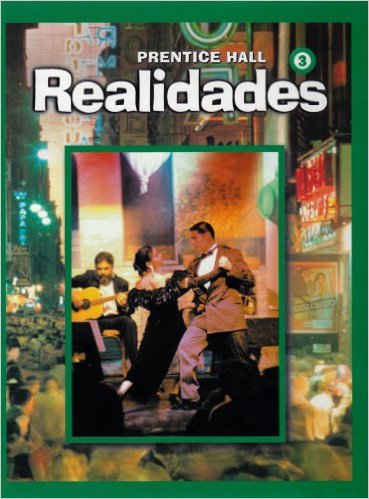
All Solutions
Page 203: Actividad 6
If there are two verbs in the sentence we can either use the pronoun before the first or before the second verb.
In the negative sentence, the pronoun goes after no and before the verb.
When we attach the pronoun to the verb, most times we have to add the accent mark.
In affirmative commands, the pronoun goes at the ending of the verb.
In negative commands, the pronoun goes after no and before the verb.
In the instructions of the task, we have indicated to use the command.
Since we have “la comida” (the food) we know that we will choose “servir” and for the second verb “lavarse” (wash).
For the first blank, we will use the affirmative command for the third person plural (Uds.) of the verb “servir” (sirvan). Since we have “la comida” we will attach the pronoun “la” to the verb (sírvanla).
For the second, we will use the affirmative command for the third person plural (Uds.) of the verb “lavarse” (lávense). We will attach the pronoun for the third person plural “se” at the end of the verb.
If there are two verbs in the sentence we can either use the pronoun before the first or before the second verb.
In the negative sentence, the pronoun goes after no and before the verb.
When we attach the pronoun to the verb, most times we have to add the accent mark.
In affirmative commands, the pronoun goes at the ending of the verb.
In negative commands, the pronoun goes after no and before the verb.
In the instructions of the task, we have indicated to use the command.
Since we have “las ventanas” (the windows) we know that we will choose “abrir” (open).
We have “No”, therefore will use the negative command for the third person plural (Uds.) of the verb “abrir” (abran). Since we have “las ventanas” and a negative command, the pronoun “las” goes before the verb.
If there are two verbs in the sentence we can either use the pronoun before the first or before the second verb.
In the negative sentence, the pronoun goes after no and before the verb.
When we attach the pronoun to the verb, most times we have to add the accent mark.
In affirmative commands, the pronoun goes at the ending of the verb.
In negative commands, the pronoun goes after no and before the verb.
In the instructions of the task, we have indicated to use the command.
Since we have “la basura” (the garbage) we know that we will choose “recoger” (pick up).
We have “No”, therefore will use the negative command for the third person plural (Uds.) of the verb “recoger” (recojan). Since we have “la basura” and a negative command, the pronoun “la” goes before the verb.
If there are two verbs in the sentence we can either use the pronoun before the first or before the second verb.
In the negative sentence, the pronoun goes after no and before the verb.
When we attach the pronoun to the verb, most times we have to add the accent mark.
In affirmative commands, the pronoun goes at the ending of the verb.
In negative commands, the pronoun goes after no and before the verb.
In the instructions of the task, we have indicated to use the command.
Since we have “los niños” (the kids) we know that we will choose “ayudar” (help).
We will use the affirmative command for the third person plural (Uds.) of the verb “ayudar” (ayuden). Since we have “los niños”, the pronoun “los” goes at the end of the verb.
If there are two verbs in the sentence we can either use the pronoun before the first or before the second verb.
In the negative sentence, the pronoun goes after no and before the verb.
When we attach the pronoun to the verb, most times we have to add the accent mark.
In affirmative commands, the pronoun goes at the ending of the verb.
In negative commands, the pronoun goes after no and before the verb.
In the instructions of the task, we have indicated to use the command.
Since we have “el comedor” (dining room) we know that we will choose “limpiar” (clean).
We will use the affirmative command for the third person plural (Uds.) of the verb “limpiar” (limpien). Since we have “el comedor”, the pronoun “lo” goes at the end of the verb.

